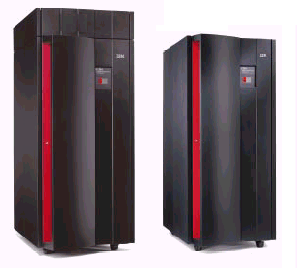

IBM S/390 Architecture
Group 6
Team: Richard Brown, Pierre Fontenelle, Kristofor Jacobson, Yue Liu
- Overview/History of Architecture
- ALU/CPU
- Control Unit
Overview/History of Architecture of the IBM S/390
The IBM S/390 developed from the IBM S/370, which was a close relative of the IBM S/360.
This is notable because the IBM S/360 was one of the first families of computers (as discussed in class)
instead of individual, custom-built machines. The first S/360 machines were released in 1964;
they shared a common user instruction set, though the instructions were organized (i.e., implemented)
differently on various models, and the operating systems differed somewhat across the family1.
Gene Amdahl, the creator of "Amdahl's Law"2
described the S/360 architecture as3:
- An approach to storage which permits and exploits very large capacities, hierarchies of speeds,
read-only storage for microprogram control, flexible storage protection, and simple program relocation.
- An input/output system offering new degrees of concurrent operation, compatible channel operation,
data rates approaching 5,000,000 characters/second, integrated design of hardware and software,
a new low-cost multiple-channel package sharing main-frame hardware, new provisions for device status information,
and a standard channel interface between processing unit and input/output devices.
- A truly general-purpose machine organization offering new supervisory facilities,
powerful logical processing operations, and a wide variety of data formats.
- Strict upward and downward machine-language compatibility over a line of six models
having a performance range factor of 50.
This formal separation of architecture from logical implementation and organization is a strong legacy of the S/390;
architecture and organization is part of the required curriculum for
accredited computer science universities today4.
The historical timeline looks something like this1:
- 1964: S/360 announced
- 1970: S/370 announced
- 1982: XA/370 announced, extending memory addressing from 24 to 31 bits
- 1988: ESA/370 announced, to support multiple address spaces
- 1990: S/390 and ESA/390 were announced
- 1999: New architecture of S/390, the z/Architecture, announced
Resource Links

